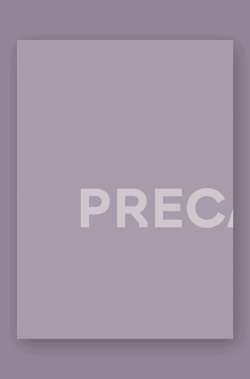Reviving the Heart of the City (1)
May 30, 2008

Some nurseries offer a new advantage to parents, cameras strategically placed in their facilities so that parents can observe the behaviour of their children online. The idea seems somewhat perverse because, although it does encourage transparence and information by allowing parents to see if their baby eats or takes a nap, it is also a way of monitoring the educator.
What is offered as an advantage could be the beginning of a divide; in this case it confirms that distrust among parents and educators is part of the educational area.
The nursery under surveillance is a sign of the current times. It begins this article because it demonstrates the apparent innocence of the media, its false neutrality, its irrefutable advantages and its cunning development. Real life, or what we called real until now, has become an ambiguous landscape that is becoming more and more a representation of itself. We still talk about the city as if we knew what we were talking about, but the media’s ability to conquer territory generates a silent and continuous explosion around us, and cities mutate at a very high speed.
With no further regrets, we no longer recognise ourselves in our former images or in those places we frequented. We have acquired new habits and our demands have multiplied. Physical space is only a part of our surroundings, worth almost nothing compared to virtual space. How does this mutation affect what we, until now, have understood as civic facilities?
These unique buildings, whose mission is to balance urban life by offering services and pleasure to citizens, greatly suffer the explosive effect of media and their survival depends on their mutation abilities, on their programmatic expansion. The heart of the city is in need of reviving.
Furthermore, as nexuses of social life, civic facilities face on a daily basis the instability of relationship patterns, the vanishing of common reference points and the effects of an increasingly volatile economy. For some years, the London district of Tower Hamlets has seen that the use of its libraries is decreasing. In Spain, civic centres, created to encourage community participation, are turning from activism to recreation. In the South of Los Angeles, youth are krumping (2) in the middle of the street since new sports find no place in conventional sports facilities and schools, in any given place on the planet, lack of tools to educate the children of apathetic parents.
This discord between typologies of the 20th century and the needs of the 21st coexists with the paradox that, in this ambiguous landscape that we continue to call “city”, residential programmes are less focused on urban artifacts and more on land conquering, which causes civic facilities to stand out as beacons, as hallmarks of civilisation. Their very presence, meant to produce the effect of a dialogue with their surroundings, to generate experiences, should act as a magnet in the face of domestic dispersion and as an essential heterotopic escape from our most intimate space, nowadays none other than cyberspace and virtual communities.
However, in order to act as true urban milestones, they may have to share prominence with commercial uses, as the majority of our actions are likely to entail an incitement to commerce, and commerce generates activity. In this first issue of the Civilities series, we wish to show several examples of mutating typologies and of other emerging ones, which highlight the following trends:
REGENERATION OF ENVIRONMENT
The responsibility of regenerating the environment is an increasingly important aspect and is attributed to any new civic facility, as yet another part of its programme, regardless of its cale. The presence of these services provides urban quality, something harder and harder to come by. In less fortunate areas or areas that have suffered a process of neglect, these services not only offer activities but also positive expectations. In new settlements, it is the root of the development of community relations.
PROXIMITY
Bringing together an increasingly scattered population reduces the need to travel and identifies political decentralisation with social participation. Consequently, its size adapts to the population density it is placed in.
VIRTUALITY
The presence of civic facilities extends even into virtual space by means of net games like Second Life, where cultural centres like Madrid’s La Casa Encendida have opened their headquarters so that followers/residents can visit exhibitions, participate in activities and have a social life in an environment made up of images and resemblance of what is real.
CO-LOCATION
This is a way to improve the management of resources and to create synergy. Currently, ducational and health facilities tend to share accommodation at the basic levels of assistance (see case of the Sure Start centres, pp. 10-15). However the combining of activities creates a symbiosis that benefits all users. What could be called parasitic combinations also arise, like the use of community facilities to make a skating rink on the deck.
USES RECYCLING
This happens with typologies like a library, because of the close competition they have with on-line libraries. In the last few years, after a first look into media libraries (especially in France), libraries with shops, homework clubs, art galleries, parks or meeting places have been flourishing.
PUBLIC-PRIVATE PARTNERSHIP
Participation at a private leve¡ is growing in the ownership, financing and management of civic facilities in joint projects with public institutions. The reason for this participation is not only because of the difficulties that public budgets have to attend to all of the demands of the population but also because of the progressive sophistication and diversification of these demands and the growing leisure time the community has at its disposal.
JEUNISM (3)
The offer of programmes and buildings specifically designed for youth has increased in spite of an inverted population pyramid that is the norm in developed countries. This tendency could possibly be an antidotal response to the failure of the educational system. The exclusion of other age groups entails a risk of autosegregation, allowed and promoted by the rest of society, as a strategy to maintain a precarious balance among generations.
RETAILIZATION (4)
In both private and public centres, the introduction of commercial aspects not only helps to finance the activity, but also to satisfy a demand for consumption that is inherent in almost every social relationship. The installation of vending machines, booking offices, bars, shops and even hair dressers in community centres is a progressive colonisation of this space, which until a few years ago, was free of commercial activities and the demands that commerce entails.
ESCAPISM VS. ENGAGEMENT
The activities of community associations, which gave meaning to the first civic centres, are being replaced by cultural programmes, as visual or performing art centres, or entertainment programmes, with no social goals. In architectural terms, this change in tendency implies a change of dimensions and a greater sophistication in installations.
CONSUMING VS PARTICIPATING
The community attends many more numerous and crowded activities as an audience than as active participants. Attendance as a spectator at any event does not entail any kind of link with others, besides sharing an experience. Nevertheless, the ability that these activities have to generate wealth and dynamics in the area justify their presence in urban areas and their growing success is encouraging in opposition to the suction exerted by shopping centres.
DISSOLVING LIMITS
This is achieved by means of a selection of light and translucent materials and a project intervention that goes beyond construction and that considers public space to be a substantial part of the civic facility. The conversion of outdoor space into indoor space by means of light, enclosing structures is also observed and allows for more use in adverse climates.
SUSTAINABILITY
This is the most outstanding construction attribute, which, in this kind of public project, finds the opportunity to test energy saving systems and resource management. It also favours the incorporation of recycled and vegetable-based products in the catalogue of building materials.
Article published in a+t 29. Civilities I
NOTES
About the article's title: According to the CIAM 8 concept, the heart of the city is the physical
heart of the community, or the place where the sense of community finds physical expresion. J. Tyrwhitt, J. L. Sert, E. N. Rogers. CIAM 8. The Heart of the City: Towards the Humanisation of Urban Life. London and Pellegrini and Cudahy, Nueva York, 1952.
(2) Krumping is a form of dancing that originated in the African-American community of South Central Los Angeles, California and is a relatively new form of the “Urban” Black dance movement. It is free, expressive and highly energetic, with a strong ethnic
(3) From the French term jeunisme. The term describes the cult of youth and its preponderance over other age segments.
(4) From retail.
RELATED POSTS
|
|


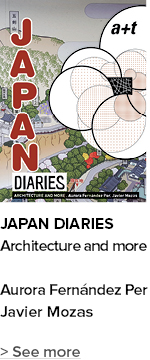


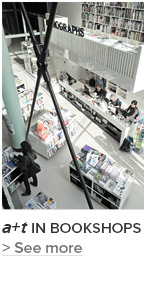
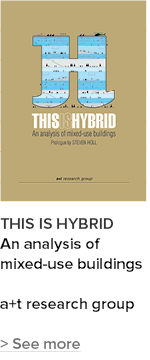


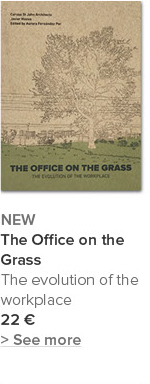

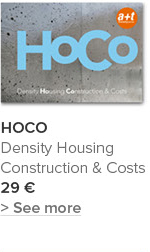
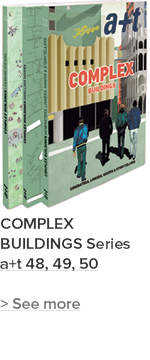


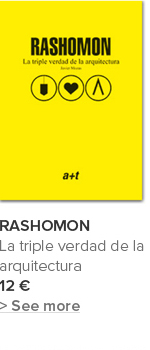
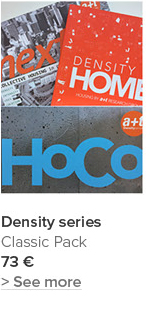






 I've read and agree to
I've read and agree to 


